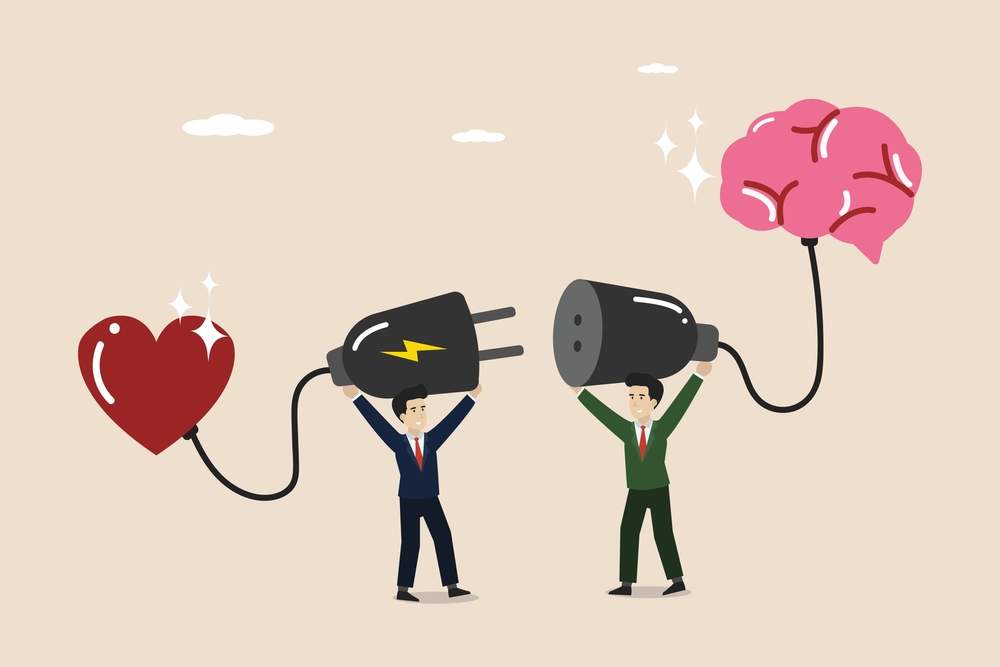Post Date: February 11, 2024

Thought-Feeling Alignment: In the intricate landscape of human experience, discrepancies between thoughts and feelings can impact mental well-being and decision-making. This article delves into overcoming these internal discordances, providing practical strategies for achieving alignment. Join us on a journey to understand the challenges posed by misalignments and discover effective techniques to harmonize our internal states.

The Challenge of Discrepancies
Discrepancies between thoughts and feelings are a common facet of the human experience. Consider the individual who, despite logically understanding the need for change, finds themselves emotionally resistant to it. Such misalignments can manifest in various aspects of life, impacting relationships, career choices, and overall satisfaction. The failure to address these discrepancies may lead to heightened stress, anxiety, and a sense of internal conflict.
Understanding the Dynamics
The dynamics behind thought-feeling discrepancies are rooted in psychological and emotional processes. Cognitive dissonance, the discomfort arising from holding conflicting beliefs, is a key player in this dynamic. Additionally, the regulation of emotions plays a crucial role, influencing the alignment or misalignment of thoughts and feelings. Developing self-awareness becomes paramount in understanding the intricacies of these dynamics.
Thought-Feeling Alignment Strategies
Self-Reflection
Self-reflection serves as a powerful tool in recognizing and understanding discrepancies between thoughts and feelings. Taking the time to introspect allows individuals to identify patterns, triggers, and underlying beliefs contributing to misalignments. Engaging in regular journaling can provide a structured means of tracking and analyzing these internal states.
Cognitive Restructuring
Cognitive restructuring involves challenging and reframing negative thought patterns. By questioning the validity of distorted beliefs and replacing them with more balanced perspectives, individuals can actively work towards aligning their thoughts and feelings. Real-life examples underscore the efficacy of cognitive restructuring in transforming internal narratives.
Emotional Regulation
Effective emotional regulation is essential for achieving thought-feeling alignment. Mindfulness practices, such as meditation and deep-breathing exercises, offer valuable techniques for managing intense emotions. Developing a personalized emotional regulation toolkit empowers individuals to navigate the ebb and flow of emotions with greater ease.
Communication Skills
The role of effective communication in resolving internal discrepancies cannot be overstated. Learning to express thoughts and feelings assertively and empathetically promotes understanding, both internally and in external interactions. Seeking external support, whether through conversations with friends, family, or professional guidance, can provide valuable perspectives and insights.
Integrating Alignment into Daily Life
Thought-feeling alignment is not a one-time achievement but a continuous process. Integrating alignment strategies into daily routines is crucial for sustainable change. Small, consistent efforts, such as practicing mindfulness for a few minutes each day or challenging negative thoughts as they arise, contribute to the cumulative effect of achieving long-term alignment. Patience and self-compassion are vital companions on this journey of self-discovery and transformation.

Conclusion:
In conclusion, the journey toward thought-feeling alignment is a profound exploration of the self. By understanding the dynamics of discrepancies, engaging in self-reflection, practicing cognitive restructuring, regulating emotions, and honing communication skills, individuals can navigate towards a harmonious internal state. The key lies in integrating these strategies into daily life, recognizing that improvement is a gradual process that unfolds with dedication and practice.





